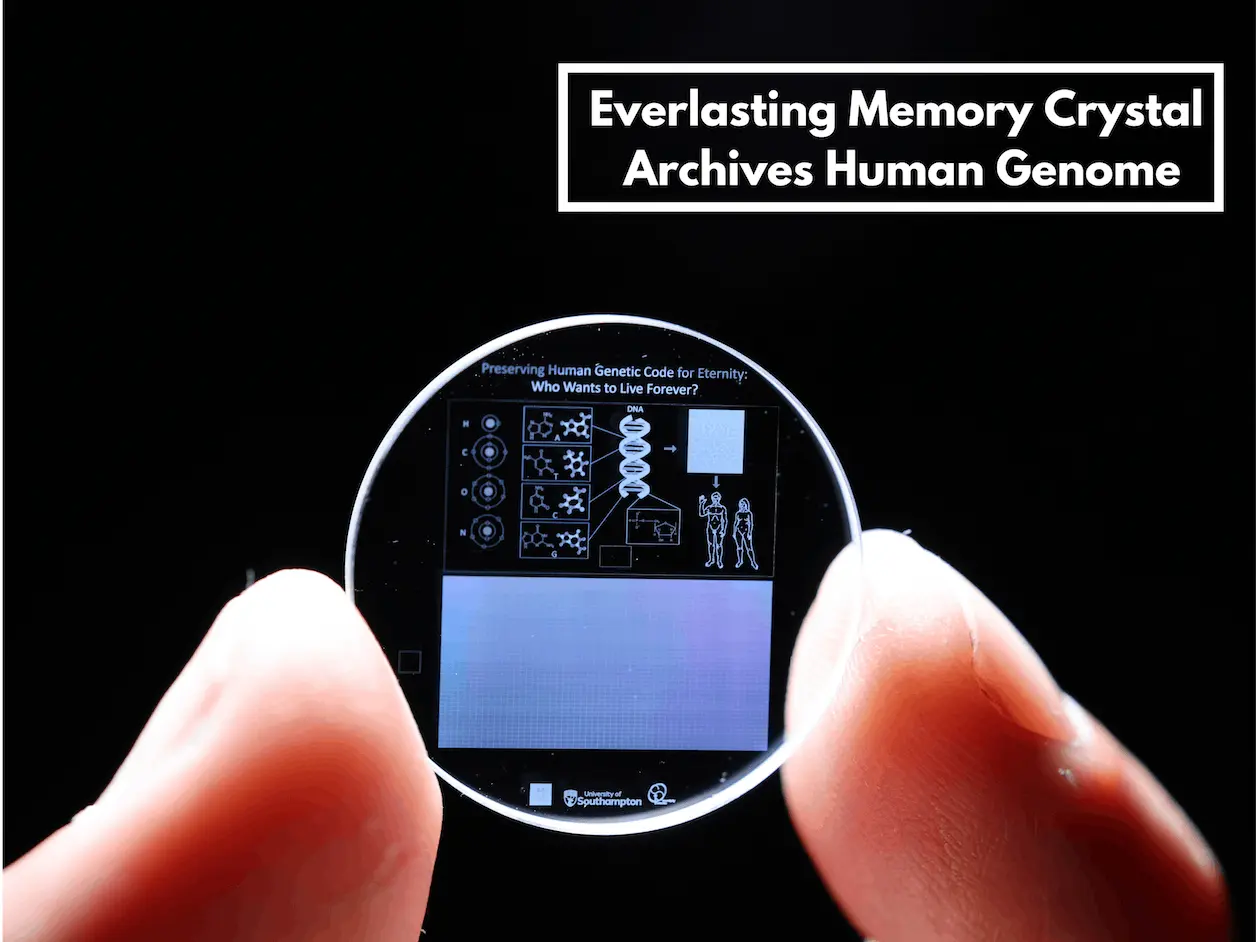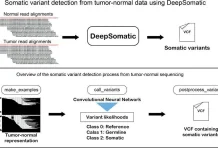In a remarkable corridor of achievement, the scientists of the University of Southampton have reputedly gotten the ability to conserve the complete human genomic sequence on a disruptive 5D memory crystal. This achievement is an exceptional phenomenon in data storage and has profound implications for preserving the genetic heritage of humanity and other species.
The 5D Memory Crystal
The 5D memory crystal, a creation by the university’s Optoelectronics Research Centre (ORC), bears unprecedented durability and storage longevity. Unlike the previous ways of storing data, which were subject to aging deterioration, this crystal can hold a lot of information for decades, even centuries and millennia, even in the harshest of conditions.
The crystal’s remarkable resilience stems from its composition and structure. The crystal is equivalent to fused quartz, one of the most chemically and thermally durable materials on Earth. It withstands extremely low as well as unbearably high temperatures, extreme stress, and even radiation. It can withstand the high and low extremes of freezing, fire, and temperatures of up to 1000 °C. The crystal can also withstand a direct impact force of up to 10 tons per cm2 and is unchanged by long exposure to cosmic radiation.
This process of ‘writing’ data into the crystal involves the use of nanostructured thin films to form voids in the bulk of the crystal, which has been filled up with information using ultra-fast lasers to form a very robust and long-lasting storage media.
Preserving the Human Genome
The ability to store the human genome on a 5D memory crystal has immense potential for preserving our genetic heritage. Given that climate change, loss of habitat, and other factors continue to endanger many species, including humans, which are fast disappearing, there is a compelling need for a safe and permanent biorepository for genetic material.
The role of the 5D crystal embedding the human genome backup in safeguarding genetic information is relevant as it guarantees that human genetic information will not be lost no matter the catastrophic situations faced by succeeding generations. This may be useful in circumstances like huge pandemics, atomic war, or any other calamity that has potential threats to the existence of the human race.
Beyond Humans: Protecting Endangered Species
The 5D memory crystal is not limited to storing the human genome. It can be used to store the coveted DNA of other flora and fauna that are at risk of going extinct. By developing a digital storage system for the genomes of these species, scientists will prevent deletion and even resurrection in the future.
This technology could be extremely beneficial to those species facing the imminent threat of habitat destruction or population decline, ensuring that someday these species will exist by keeping their genetic material viable even when they are extinct in their natural habitat.
Implications for Synthetic Biology
The completion of the 5D memory crystal gadget is also likely to create a falling edge regarding synthetic biology. With the continuous evolution of science making us more aware of the DNA and our genetic makeup and more knowledge development, it becomes possible for scientists to come up with synthetic organisms.
The 5D memory crystal may serve to retain the genetic codes of such synthetic cells to ensure that they can be remade when lost or damaged. This may be useful in the fields of medicine, agriculture, environmental science, and many more.
Challenges and Future Directions
Although the 5D memory crystal appears to be a better alternative medium for the long-term management of data, certain challenges remain. Foremost among them is the issue of the extraction of information from the crystal. Data information may be encoded for several billions of years; however, retrieving this data requires some equipment and methods.
Furthermore, the size and the weight of the structure of the crystal may be some of the factors limiting its applications. A single crystal can accommodate a huge quantity of information, however, the primary size of the crystal may pose difficulties in storing and moving around this information.
Apart from these constraints, the 5D memory crystal represents an important advancement in the development of the field of data storage. Most likely, as scientists work further on this technology, it will become essential in nurturing our gene pool and saving wild domestic animals.
Conclusion
The 5D memory crystal technology may become a reality whereby not only the human genome will be stored, but also the genetic materials of millions of other species can be stored as well. This technology may enable the provision of a more sustainable and permanent medium for storage, and it may indeed change how we perceive the concept of data storage and the future of all forms of life on Earth.
Please leave a comment below to share your thoughts on the 5D memory crystal.
Article Source: Reference Article
Follow Us!
Learn More:
Anchal is a consulting scientific writing intern at CBIRT with a passion for bioinformatics and its miracles. She is pursuing an MTech in Bioinformatics from Delhi Technological University, Delhi. Through engaging prose, she invites readers to explore the captivating world of bioinformatics, showcasing its groundbreaking contributions to understanding the mysteries of life. Besides science, she enjoys reading and painting.
















